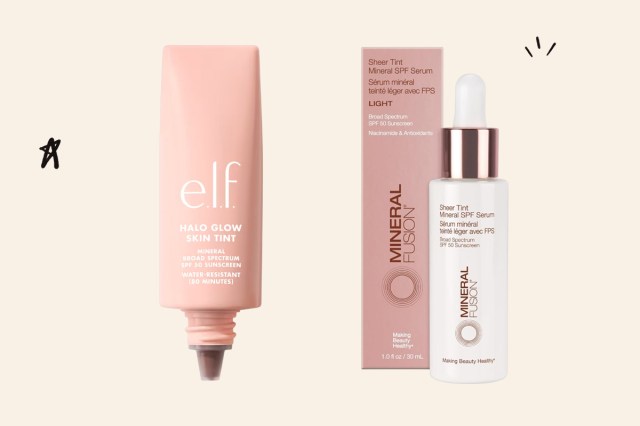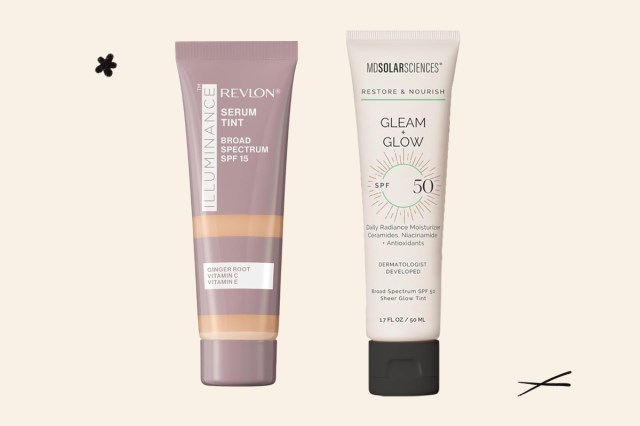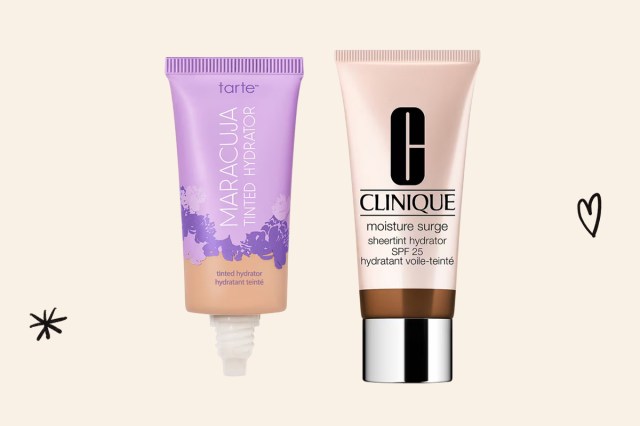All featured products and deals are selected independently and objectively by the author. Better Report may receive a share of sales via affiliate links in content.
The quest for a flawless complexion has us navigating a dizzying array of products, each promising perfection. We’ve tried them all, from the multitasking BB creams, aka beauty balms, that emerged from South Korea, offering a blend of skincare benefits like hydration and SPF with light coverage, to the color-correcting prowess of CC creams designed to neutralize redness and uneven tones. But now, a new contender has stepped into the spotlight, quickly becoming the darling of the beauty world: the skin tint. What exactly is a skin tint, and how does it differ from its predecessors?
Prices are accurate as of July 10, 2025. Subject to change.
What is a Skin Tint?
Think of it as the ultimate “your skin, but better” product. Skin tints are designed to provide the sheerest wash of skin-moisturizing coverage without feeling heavy — perfect for warmer months. These more natural, breathable formulas also include skin-nourishing ingredients that can fade dark spots, calm irritation, and blur wrinkles for a luminous finish with effortless application.
How to Find the Right Shade
Like foundations and concealers, skin tints come in a range of shades that work best when matched to your skin’s undertone: warm, cool, or neutral.
You’re Cool if:
– Your veins appear blue or purple in natural light.
– Silver jewelry tends to look best on you.
– You burn easily in the sun and rarely tan.
You’re Warm if:
– Your veins look more green in natural light.
– Gold jewelry is more flattering on your skin.
– You tan easily and rarely burn.
You’re Neutral if:
– Your veins are a mix of blue and green, or it’s hard to categorize.
– Both gold and silver jewelry look equally good on you.
– You sometimes tan and sometimes burn, depending on sun exposure.
Reader Favorites
Tip: Avoid testing the color on your arm or hand, and instead apply a few different shades on your jawline in natural light where you’ll find the best match for your complexion. Then choose the shade that most seamlessly blends into your neck and cheeks. If you’re buying online, many brands and beauty sites offer online tools to help you match shades to your skin.

Have Super Dry Skin?
Look for skin tints that contain hyaluronic acid, a powerful humectant that draws moisture from the air into the skin. It helps keep skin hydrated while plumping and strengthening the skin’s barrier to help prevent future moisture loss — especially beneficial for dehydrated skin. Our picks: Neutrogena Hydro Boost Hydrating Tint and Kylie Cosmetics Skin Tint Blurring Elixir

Have Fine Lines?
Look for skin tints that contain peptides — short chains of amino acids — which can improve firmness and elasticity by signaling the skin to produce collagen and elastin, and repair the skin barrier. Our picks: Danessa Myricks Beauty Yummy Skin Tint and Arbonne Sheer Coverage Skin Tint

Have Dark Spots or Uneven Skin Tone?
Look for skin tints that contain niacinamide. It inhibits the transfer of melanin (skin’s pigment) to skin cells, helping fade hyperpigmentation while calming inflammation and strengthening the skin barrier, supporting a more even skin tone. Added SPF helps prevent further discoloration. Our picks: e.l.f. Halo Glow Skin Tint and Mineral Fusion Sheer Tint Serum

Have Dull Skin?
Look for skin tints that contain vitamin C. Its antioxidant properties help protect skin from free radical damage, contributing to brighter and more radiant-looking skin. SPF prevents further dulling. Our picks: Revlon Illuminance Serum Tint and MDSolarSciences Gleam + Glow Mineral Tinted Creme

Have Sensitive Skin?
Look for skin tints that contain aloe, which has soothing, moisturizing, and anti-inflammatory properties. Our picks: Tarte Maracuja Tinted Moisturizer and Clinique Moisture Surge SheerTint Hydrator
Featured Image Credit: Berk Ucak/ iStock
More From Our Network
Better Report is part of Inbox Studio, which publishes content that uplifts, informs, and inspires.

















